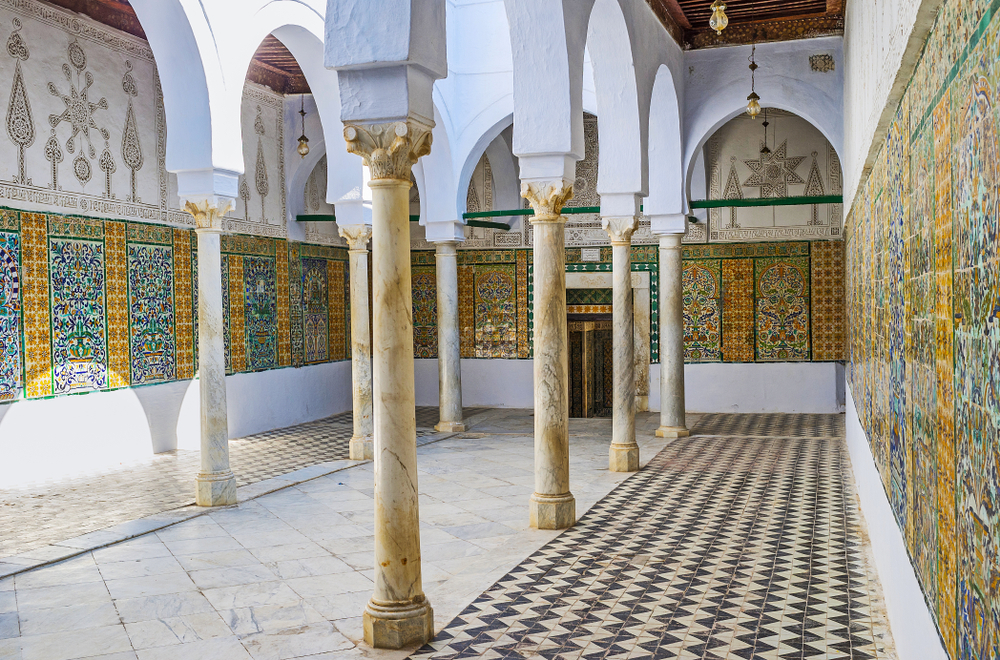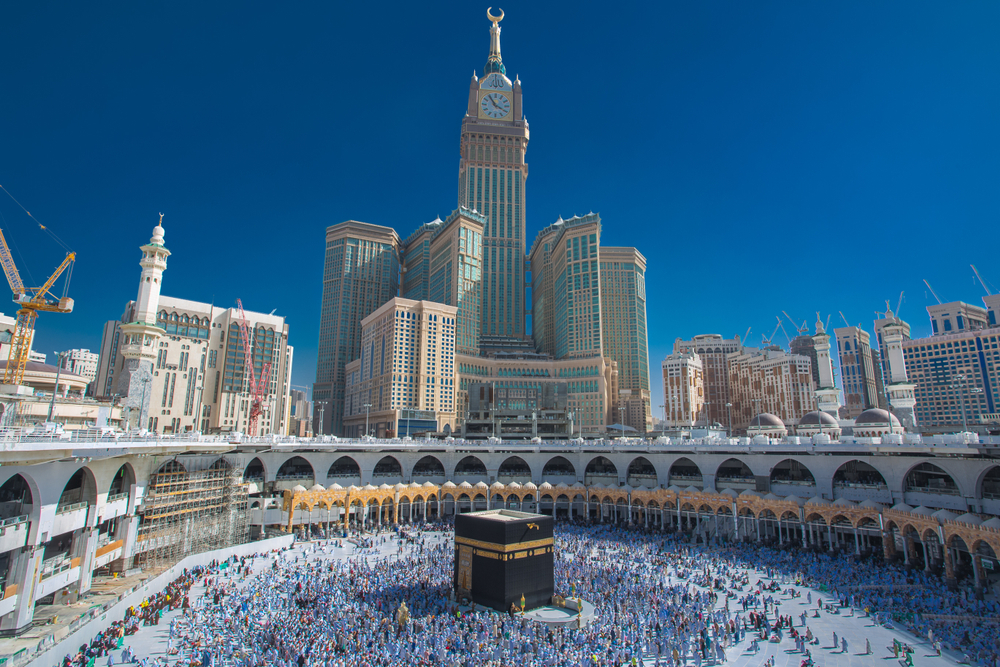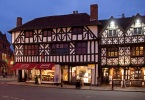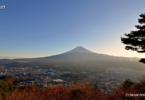Top Sights of The 4 Islamic Holy Sites
Travel has always been a key component of the world’s great religions. From pilgrimages to exoduses to retreats, there has always been a great importance placed on moving, whether permanently or just for a visit, to pastures green, deserts golden, or cities of every colour from grey to glittering.
Possibly more than any other religion, Islam has gone above and beyond in this manner. Not only does it possess a multitude of holy sites, but they are carefully ranked and organised, based on their place in broader Islamic history. If you are wanting to embark on travels with extra significance to broaden your mind and deepen your understanding of another culture, these four sites might be highly worth your time.

Kairouan
The Fourth holiest site in all Islam, and the only one to be found west of the Suez Canal. The name itself is inextricable from travel, since the word is an Arabic mutation on the Persian word ‘Kârvân’ meaning military / civilian camp, or resting place, and is linked to where we get our word ‘Caravan’.
Its importance arises from how after the initial Arab conquests in the seventh century, this was the site of the first Mosque constructed on virgin territory. Many Muslims believe that seven pilgrimages to Kairouan are religiously equivalent to one visit to a certain place that will be discussed later in this piece.
The most impressive sight to see in the city is the Great Mosque of Sidi-Uqba, which features 414 columns of marble, granite, and porphyry, most of which were taken from the ruins of the ancient arch nemesis of Rome, Carthage. The beautiful pillars and arches were the site of many stimulating and important theological and philosophical discussions, everything from the abstract, such as predestination and free will, to the imminent, such as who is eligible to receive Zakat, Islam’s divinely mandated charity offering.
With the majestic pillars and the wide open plazas within the Great Mosque of Sidi-Uqba, it makes an ideal spot for a great many beautiful panoramic photographs. On rare occasions, tourists are allowed access to the roof of the mosque, where truly astonishing views of the city below can be seen. If you want to see a city a little further off the faithful path, but still rich in history and intrigue, Kairouan is ideal.
Jerusalem
In position three, Jerusalem is the holy city that most closely connects the three major Abrahamic faiths. For Jews, it is the historic capital of the country they created after escaping tyranny in Egypt. For Christians, it was the place where Jesus’s ministry ultimately came to its end, where he died, and was then raised again.
For Muslims, aside from the many shared connections with figures like Dawud (AKA King David), Sulaimon (AKA Solomon), and Ilyas (AKA Elijah), there is also the grand and overarching presence of the Al-Aqsa Mosque and the Dome of the Rock. For Muslims the former site is important because they believe is it the place where Muslims believe Mohammad was miraculously transported to during Isra and Mi’raj – collectively known as the “Night Journey”. The latter is believed to be the site where God stepped down from heaven to create the world.
It is almost impossible to walk anywhere in Jerusalem and not come across something of deep and important historical significance. With such a rich history and so many deep connections to people of faiths all around the world, any trip here is always something special. The Dome of the Rock in particular is richly detailed with beautiful geometric flowing patterns and a glistening golden roof. With Jerusalem, it is not so much what you come to see, but what you have time to fit in.
Medina
The second of Saudi Arabia’s two great religious sites, Medina is often part of the Hajj, the pilgrimage that is a holy obligation for all Muslims at least once in their lifetime. Certain parts of the city are not somewhere just anyone can travel to, as the spiritual significance of Mohammad’s grave is such that it is zealously protected, and non-Muslims may not attend.
However other aspects of the city, such as the Jannatul Baqi graveyard, are open for viewings and tourism, but it is naturally expected that this will be somewhere of deep and sombre reflection, as it is the final resting place of many of Mohammad’s relatives and closest associates. Anyone walking near it will likely hear some Muslims reciting prayers or offering other forms of worship in the near vicinity.
Medina is also home to the Quba Mosque, arguably the oldest mosque still standing in all of Islam, with certain traditions stating that the first stones that put this mosque together were placed there by Mohammad himself. Again, sensitivities and care must be remembered here, but the artwork and architectural style that has been lavished upon this near-holiest of holy Islamic sites is something that must be seen to be believed.
As Saudi Arabia looks to improve its tourism industry, expanding its ambitions beyond the Hajj pilgrims that visit every year, Medina is increasingly turning into a transport hub with connections to Jeddah, Riyadh, and several other important urban centres. Arriving here is not always easy, because of the smaller airport, and many chose to come in via Jeddah, but once people do reach the city proper, it is clear to understand why it inspires so many.

Mecca
The presence of the word “Mecca” and what it means has now become so ubiquitous that anywhere of any special significance to a particular subculture or other cultural group is known as the “Mecca of [INSERT GROUP]”.
This is the place where all Muslims direct their prayers, five times each and every day, and as such the sensitivities that exist in Medina are now much more heightened. The most important part of the city, the Kabba, is only accessible to Muslims, and the broader city itself cannot be entered by non-Muslims. Which is not to say there is nothing for Non-Muslim tourists to do.
The so-called “tent city” of Mina is a site where Muslims believe Satan himself was symbolically stoned, a sign of the victory of good over evil. This is a site where many Muslims will sleep prior to visiting the city proper on a Hajj.
The Holy sites of Jabal Al Noor (the Mountain of Light) and Jabal Al Thur, are also to be found nearby. Respectively, these are the mountains where Mohammad first had the Quran revealed to him, and the cave where Mohammad fled from pursuing polytheistic Meccans.
For those looking to move away from the history and past times of the area, in 2012 there opened the Abraj Al Bait, otherwise known to the wider world as the Mecca Royal Hotel Clock Tower. A super complex of hotels, shops, restaurants, museums, and even a lunar observatory centre. Whether you want to indulge in local cuisine, engage in some retail therapy, or visit the top of the tower to see the city below from the most spectacular viewpoint, there is always something to do in the Clock Tower.
Islam’s holy sites have produced a rich range of history, culture, artwork, and architecture. From the sprawling sands of the Northern Sahara in Kairouan, to the heart of the Arabian peninsula in Mecca, all these places have fascinating stories and storied histories to share. – Travel Feeder



